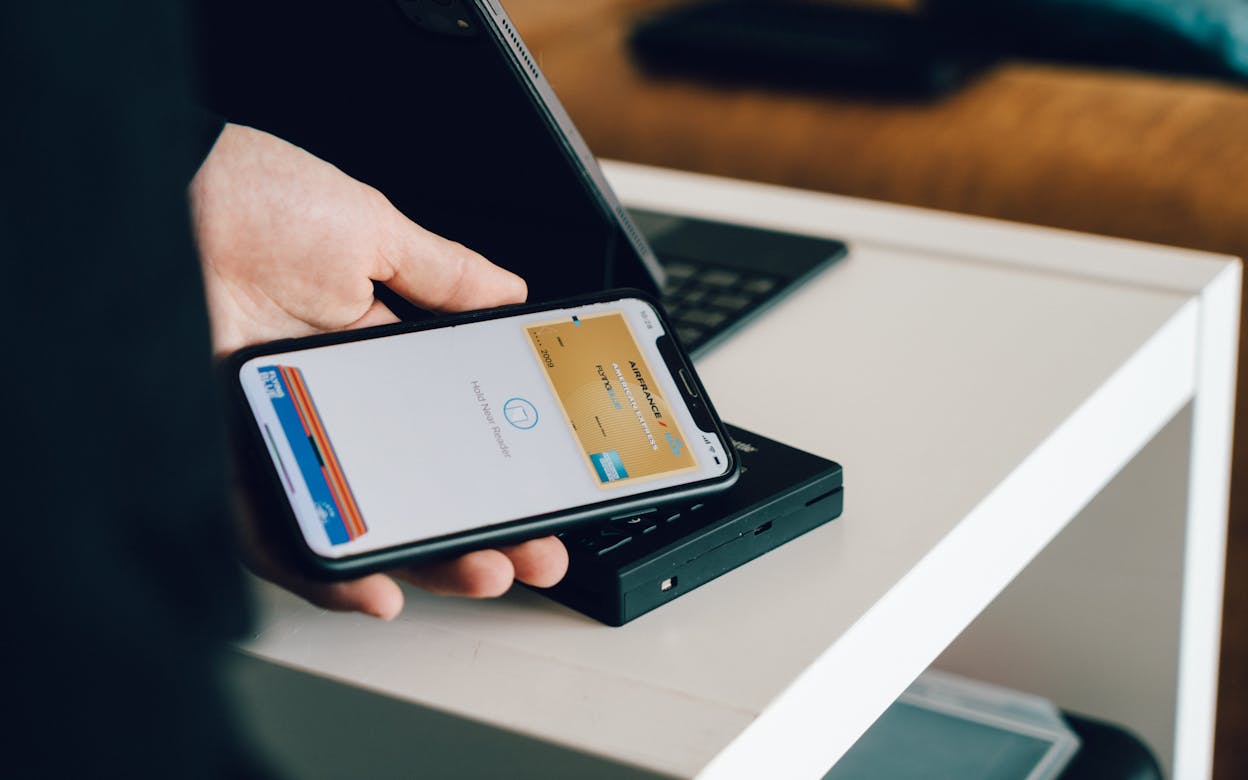10 Trends Shaping the Future of Payments & E-commerce

Image source: Unsplash
The pandemic has accelerated the digital revolution. It has changed the way businesses accept payments and the payment methods consumers are comfortable using. It’s fueling the future of payments.
Vaccination rates continue to rise, but with breakthrough cases becoming more normal, the coronavirus is still forcing businesses and consumers to depend more on digital and contactless payment methods.
According to Statista, the total transaction value in the digital payments segment is projected to reach €6,367,356 million in 2022. It’s expected to show an annual growth rate of 10.74% resulting in a projected total amount of €8,648,102 million by 2025.
And the market's largest segment is digital commerce with a projected total transaction value of €3,849,186 million in 2022.
“Our merchants’ sales volumes have drastically increased as consumer behavior continues to change to more online shopping. With this, e-commerce businesses rely even more on a payment gateway that can handle huge peaks in the number of transactions. And our merchants need to offer their customers as many payment methods as possible,” says Alex Saiz Verdaguer, CEO at MONEI.
“The e-commerce boom is here to stay and will continue to grow at a fast rate. Some payment industry players are running faster than others. The ones who adapt more quickly to the merchant's new needs will be the winners.”
MONEI users have increased by 100% month over month since the onset of COVID-19, and e-commerce merchants have been forced to learn quickly about the world of digital payments.
Understanding the importance of payment orchestration, alternative and local payment methods, and 3D Secure payment management is vital. That’s why we’ve created and will continue to update, this guide to the future of payments in 2022 and beyond.
Let’s dive in.
10 Trends shaping the future of payments
Fintech’s are leading the way by focusing on one financial vertical while banks are lagging behind as they focus on numerous verticals like insurance, payments, credit card issuing, and the list goes on.
Here we’ll take a look at popular themes in the future of payments:
1. Payment value chain built on data
With open banking and APIs, transactional data in payments provide considerable value. This data uncovers an abundance of new opportunities, including preventing fraud and streamlining financial planning for corporate and end consumers.
Payments players that can effectively use this data will have a competitive advantage. Data analytics tools and artificial intelligence (AI) continue to be important technologies in the world of payments.
Data will change the payments industry value chain. Businesses will increasingly see the importance of payment data insights. And consumers will agree to share more data if it means they can pay less for goods and services.
To continue in this direction, international consistency on data protection and privacy laws is crucial. Determining who controls data, how rules are enforced, and standards that apply on a global scale requires more context around protectionism and free trade.
Coming to an agreement on data privacy will be a big step towards unlocking its value.
2. Frictionless payments
Cutting out customer friction is critical for e-commerce and retail businesses to stay competitive in the modern digital world.
Frictionless payments use data from websites, devices, and apps to make buying easier for the cardholder and selling easier for you. They help merchants reduce cart abandonment, improve customer experience, and increase revenue.
To be considered a frictionless payment, the checkout process should have some — or all — of the following criteria:
- Faster checkout
- Fewer steps to complete checkout
- Feels like a natural part of the customer experience
- Reduces the cardholder’s cognitive strain (i.e. fewer PIN codes to memorize)
- Minimizes or eliminates waiting time
Frequently used frictionless payments include contactless card payments, QR code payments, mobile and digital wallet payments, recurring payments or subscriptions, invisible payments, in-app payments, one-click payments (like Click to Pay), and device-initiated payments.
Further reading: Online Payment Methods for Your E-commerce Business
3. Cashless economy
While we'll likely never have a completely cashless economy, the pandemic has impacted how people pay for goods. It has accelerated the growth of e-commerce and increased card payments.
Statista projects by 2023, Europe will exceed North America with $308 billion in cashless transactions.
The use of cash was already decreasing before COVID-19, but we see this trend continuing once social distancing is no longer necessary. Consumers will continue to opt for contactless alternatives.
4. Bank accounts as a commodity
Customer accounts with banks have also been used as a way for banks to build loyalty and sell products. With tech giants like Google moving into banking and offering current accounts, we’re moving into a time of the bank account as a commodity.
Offering ways to pay and store money via accounts is not as much about payments as it is about providing more benefits to customers. Platforms are personalizing their approach, increasing product range, and giving customers a more convenient experience.
5. Contactless payments
Contactless payments are a fast, safe, and secure payment method that’s here to stay. Especially as contactless transaction limits increase and more people make payments from their smartphones.
During the pandemic, contactless payments grew due to social distancing measures. However, as consumer behavior continues to change, people realize the ease of mobile payments. We’ll see fewer credit cards and more use of digital wallets.
Mobile self-checkout has eliminated the need to stand in line so shoppers can keep a safe distance from each other. Retailers will move the point of sale (POS) from a permanent physical location to a mobile experience.
As the demand for software-based POS technology grows, it’s not only reserved for large retailers. Smaller businesses are also offering this new payment method to their customers.
💡 Try MONEI QR to accept contactless Bizum payments in-store via a QR code.
6. Biometrics
The mobile technology consumers have at their fingertips today makes our lives easier. We can use our fingerprints or facial recognition to unlock our devices or pay for goods and services.
Facial analytics and biometric data are becoming more common. The next step is to build a scalable platform that makes it easy to pay with your face online or in-store.
7. Connected commerce
With connected commerce, retailers will be able to notify their customers when it’s time to replenish or replace an item they previously purchased.
Let’s look at two examples from this article by Internet of Business:
Smart running shoes. Imagine if your running shoes could track usage and alert you when it’s time to order a new pair? Now, go a step further. You get an alert, but then a new pair of running shoes is automatically ordered for you (based on previous specifications). This turns your running shoes into a subscription service. It’s completely seamless and you never have to wonder if it’s time for a new pair of running shoes.
Smart refrigerators. The surge in online grocery shopping could start to decline if your fridge can keep track of what you need. Smart refrigerators can automatically order new products when your stock gets low.
The applications of connected commerce are endless. However, key growth categories for connected commerce include wearables, health, groceries, DIY, home automation, automotive, and home appliances.
8. Real-time payments
Innovation around real-time payments continues. Over the next decade, real-time payments will be the norm in worldwide markets. The difference between domestic and cross-border settlement systems will shrink and provide benefits to merchants including funds being immediately available.
Further reading: Black Friday Cyber Monday Payment Trends (2021)
9. Cross-border payments
The cross-border e-commerce market is expected to reach $2,248.57 billion by 2025, growing at a compound annual growth rate (CAGR) of 17.4%. This means if you’re not already set up to accept cross-border payments, it’s time to upgrade.
Cross-border payments are transactions between companies, individuals, or banks that are in at least two different countries that may or may not share a border.
With more than one country involved in a transaction, the likelihood of using different currencies increases, and foreign currency exchange must take place to complete the transaction. This is where fintech and payment service providers (PSPs) come in. To accept cross-border payments, it’s important to find a payment solution that supports cross-border payments and reduces or removes exchange rates to make these payments more cost-effective and frictionless.
10. Central bank digital currency (CBDC)
Simply put, central bank digital currency is virtual money issued and backed by a central bank. It’s the digital form of the country’s fiat currency, so instead of printing money, the central bank administers accounts or coins that are backed by the full faith and credit of the government.
With the popularity of cryptocurrencies and stablecoins increasing, central banks around the world have come to terms with the fact that they need to participate in digital currencies or risk getting left behind.
There are many advantages of central bank digital currencies, here are a few:
- CBDCs have lower transaction costs making them more cost-effective than physical cash.
- People who don’t have a bank account can get safe and easy access to money from their phones, encouraging financial inclusion.
- Monetary policy can flow faster and more seamlessly.
- CBDCs compete with private companies by pushing them to be more transparent and reduce unlawful actions.
- CBDCs can help improve cross-border payments by trading directly through the same data, compliance requirements, and technical standards instead of transactions going through a long, slow, and not easily accessible payment chain.
But there are also a few disadvantages of CBDCs including:
- There are still CBDC regulatory issues that need to be overcome, which could, in the long term, lead to delays in the completion of cross-border payments.
- If people decide to hold large amounts of CBDCs, banks may sell off loans instead of holding them and borrowers may stop going to banks to obtain credit — this is also known as disintermediation. To mitigate this, banks may need to improve payment services or offer higher interest rates, leading to smaller profit margins.
- With CBDCs, the central authority will have access to all monetary transactions, and customer and transaction data, making it susceptible to misuse or hacks if exposed.
Further reading: MONEI Presents its Digital Euro Project, EURM, to the Bank of Spain's Financial Sandbox
Moving forward with the future of payments
Coronavirus has accelerated the growth of e-commerce and digital payments by three to five years. Consumer behavior will continue to evolve and to adapt, self-service and contactless payment methods are no longer an option. They’re a necessity.
The future of payments offers an abundance of opportunities to connect with your customers and create a better shopping experience.
You may also like to read:
- Payment Trends in Spain Q1 2022
- The Lasting Impact of COVID-19 on E-commerce Growth
- What is a Payment Gateway? Why You Need One & How it Works
- How to Offer Contactless Payments for a Safer, Faster Checkout Experience

Alexis Damen
Alexis Damen is the Head of Content at MONEI. She loves breaking down complex topics about payments, e-commerce, and retail to help merchants succeed (with MONEI as their payments partner, of course).

